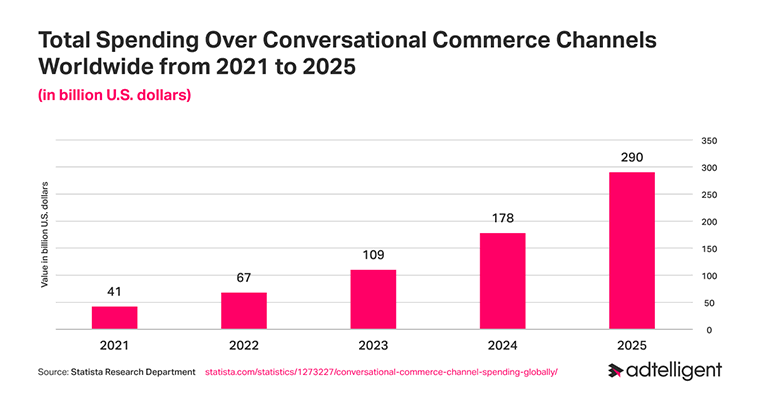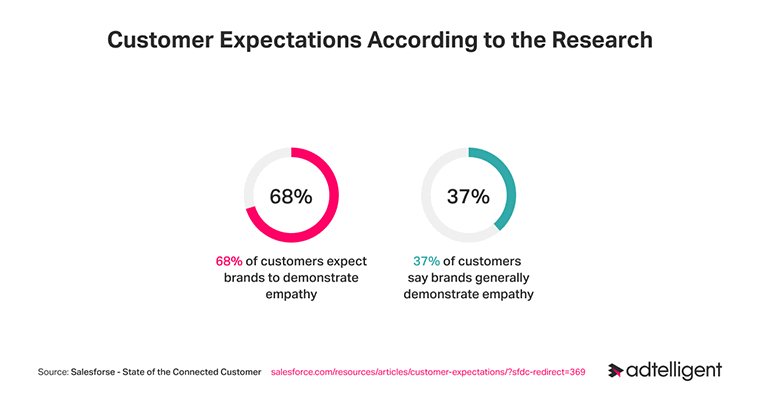Advertising and marketing spending continues to grow: in 2025, according to Statista, it will reach $1.87 trillion (in 2024, this figure was $1.78 trillion). The industry keeps growing, and so do the new demands and requirements. What will businesses focus on in digital marketing in 2025? And what steps can bring them the most benefit?
Table of Contents
Digital Marketing Trends 2025: Statistics
Semrush: 63% of businesses use paid channels to speed up their content distribution.
Hubspot: In 2024, 14% of businesses reported that content marketing delivered their highest return on investment (ROI).
AdExchanger: Retail media is set to be the fastest-growing ad channel through 2027, with annual growth expected to exceed 20%.
Digiday: In 2024, 45% of publishers said that more than 61% of their company’s revenue came from advertising.
Adweek: WARC predicts ad spend growth will slow to 6.7% in 2025 and 6.3% in 2026 due to tariffs, EU rules, and low consumer confidence.
Behavioral Advertising vs. Contextual Advertising
From the dawn of digital advertising in the 1990s, cookie-based targeting was a go-to technique for tracking user behavior and delivering relevant ads for the right audiences. Thus, behavioral advertising has been a staple targeting method for quite a long time. However, with constantly evolving consumer demand and new privacy rules, another advertising method is taking the spotlight among digital marketing trends 2025 — contextual advertising.
More and more marketers are turning to alternatives to third-party cookies and trying to decrease their reliance on third-party data. In the wake of all data collection changes and privacy updates, it is essential to find a targeting method suitable for the needs of a particular business. Here is when contextual targeting comes into play. But before figuring out why it is worth a try, we need to understand the differences between behavioral and contextual advertising targeting approaches.
Behavioral targeting
Often called audience targeting, behavioral advertising ensures that an ad is shown to a website visitor interested in the product or service. Any user identifier, like pixels or cookies, can be used to collect data about a user’s web-browsing behavior. Data is usually harvested from numerous sources to understand users’ online habits fully.
Usually, this information is stored in a data management platform (DMP) or a demand-side platform (DSP). DSP is a platform that helps advertisers manage all automatic media buying processes, including placing ads, bidding, moderation, and all other related activities. As a result, the whole process of buying media space and controlling ad budget is much simpler. It also provides detailed reports that can be useful when planning advertising campaigns. For example, Adtelligent DSP can offer such services along with high-quality display, native, and video traffic. Data processing by such platforms often focuses on page visits, ad clicks, time spent on particular topics, etc. This data is then analyzed and can be used to segment the audiences according to their shopping habits and interests.
Behavioral advertising takes users’ online history to predict what kind of product or service they might need and be invested in buying. Any online or offline actions are used to build a picture of online behavior. This data will go to the user pool or audience list, and online identifiers can monitor this behavior.
Behavioral targeting ensures the ad’s relevancy to a viewer, but it often ignores the page’s content. With the advancement of the digital advertising industry over the past years, behavioral targeting capabilities have been evolving and expanding.

Contextual targeting
Contextual advertising also strives to deliver relevant ads; however, it tries to achieve that based on the digital environment of the website on which the ad appears. Its targeting uses keywords, website content, and other metadata to determine which content might interest a user at that particular moment.
The critical difference between contextual and behavioral targeting is that the latter attempts to deliver relevant ads, ignoring the content surrounding the advertisement on the web source. The time framework plays a vital role in differentiating the inner workings of both methods: the behavioral one is based on the user’s history and past behavior online. At the same time, contextual advertising relies on the content of the page the user is currently viewing, so the ad is structured around a more immediate thought framework and serves the ad that might be interesting to the viewer at that particular moment.
Omnichannel Marketing
Omnichannel marketing uses multiple online and offline communication channels, including, but not limited to, website, app, various social media, messengers, email, retail store, call centers, etc., to create a positive experience for customers at every phase of their journey. It ensures a holistic approach to convenience and digital experiences.
The worldwide retail commerce market is expected to reach $11.6 billion in 2030, and according to the research, 86% of senior-level marketers consider omnichannel marketing strategies crucial for their success. Moreover, customers expect brands to ensure an omnichannel experience, as 73% of shoppers regularly use multiple channels in their shopping journey.

Considering all the data and clear contemporary habits of switching between multiple channels for digital experiences, it is logical to predict that an omnichannel marketing strategy is growing strong and necessary for any business. Digital marketing trends 2025 will definitely include omnichannel strategies.
Highly Personalized Content
McKinsey reports over 70% of consumers expect personalisation and will get annoyed when it doesn’t manifest. Combine that with the rise of customer expectations tied to the advancement of the digital industry and the lockdown effect. Experts say people became almost “immune” to content due to the high consumption volumes with the rise of various platforms. Personalisation can lower acquisition costs by as much as 50%.

Personalization is simply a rule for any successful online business. Numerous examples of high personalization levels with such giants as Amazon show products you might be interested in on the main page the user logs in. Netflix recommends viewers TV shows and movies based on their viewing history and favorite genres, and Spotify provides relevant musical recommendations. At this point, people have grown to expect this level of customization from most brands.
According to Hubspot research that analyzed around 100,000 call-to-action buttons (CTAs), personalized CTAs received 43% more clicks than generally targeted ones. It is in people’s nature to respond better to something that is focused on them and their interests. Personalized content reminds users of what they already want and guides them through the huge amount of online information they need to find the desired products and services, avoiding unnecessary frustration and wasting time.
Every business can put highly personalized content into action. However, the reasons to do so differ. Here are some goals that marketers expect to achieve with personalization:

Programmatic OTT/CTV ads
People are done with broadcast TV, and more and more people opt for streaming services. The cord-cutting massive cancellation of TV subscriptions available over cable or satellite shows a severe shift towards OTT content. OTT (Over-the-Top) refers to video content streaming via the Internet. CTV has connected devices, smart TVs, and streaming/gaming consoles that enable streaming OTT content.
After analyzing 330 billion global impressions, researchers found that global CTV impressions account for 51% of the global video impression share and have a stable growth trend.
This year, people prefer to watch TV programs and movies through video-on-demand services (VOD) instead of traditional TVs.
One in three households in the U.S. does not have traditional pay TV, which is likely to increase. Considering the ease of programmatic advertising implementation and targeting capabilities, we can fully expect programmatic OTT/CTV advertising to grow even further in 2025.
Audio Advertising
Programmatic audio advertising grows faster than any other ad format. Programmatic advertising allows brands to find ad space and create and execute targeted ads for podcast listeners. Podcast ads can either be in the form of copy to be read by the host, responsible for incorporating the ad copy into the podcast’s content, or a dynamic, personalized, and tailor-made ad. Digital audio advertising is one of the most perspective digital marketing trends 2025.
Visual ads are the most effective; however, audio formats should not be underestimated. Audio ads can be listened to anywhere, which makes audiences more accessible. In addition, listeners respond to advertising positively, and reports show that 6 out of 10 people are likely to purchase after hearing an ad during a podcast.
Combined with the growth of programmatic audio advertising and the simplicity of audio ad integration, audio advertising will likely become a very lucrative advertising channel.
Key Notes
The digital advertising industry is quite unpredictable and is changing swiftly. It is sometimes difficult to predict what will be a trend and will become a thing of the past. However, several tendencies have been going steady for quite a long time, and it can be said with a high degree of certainty that they will continue to grow. These trends can be implemented into the marketing strategy depending on your goals and the specifics of the business. Still, their implementation is worth a try in the quest to optimize yield and performance.